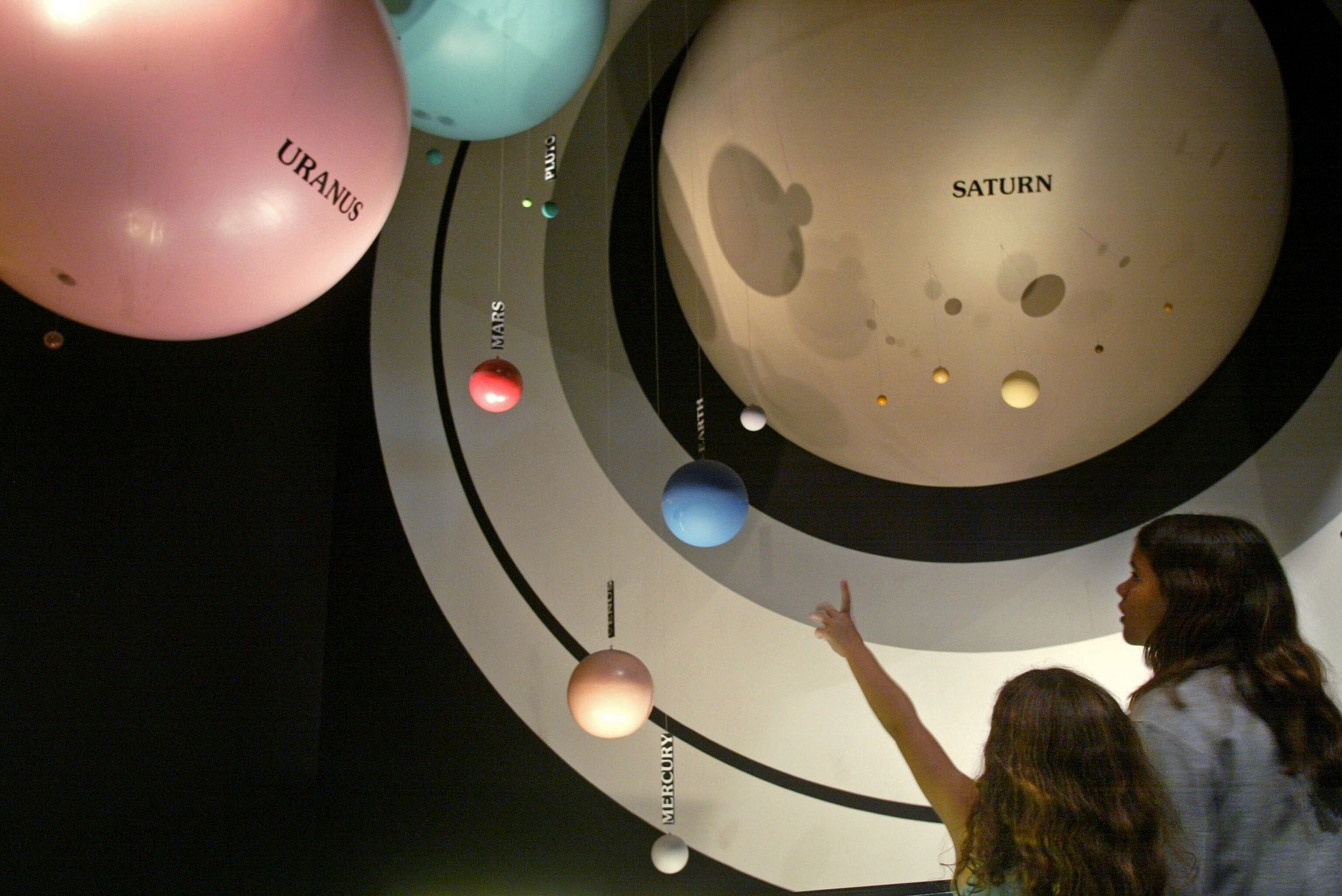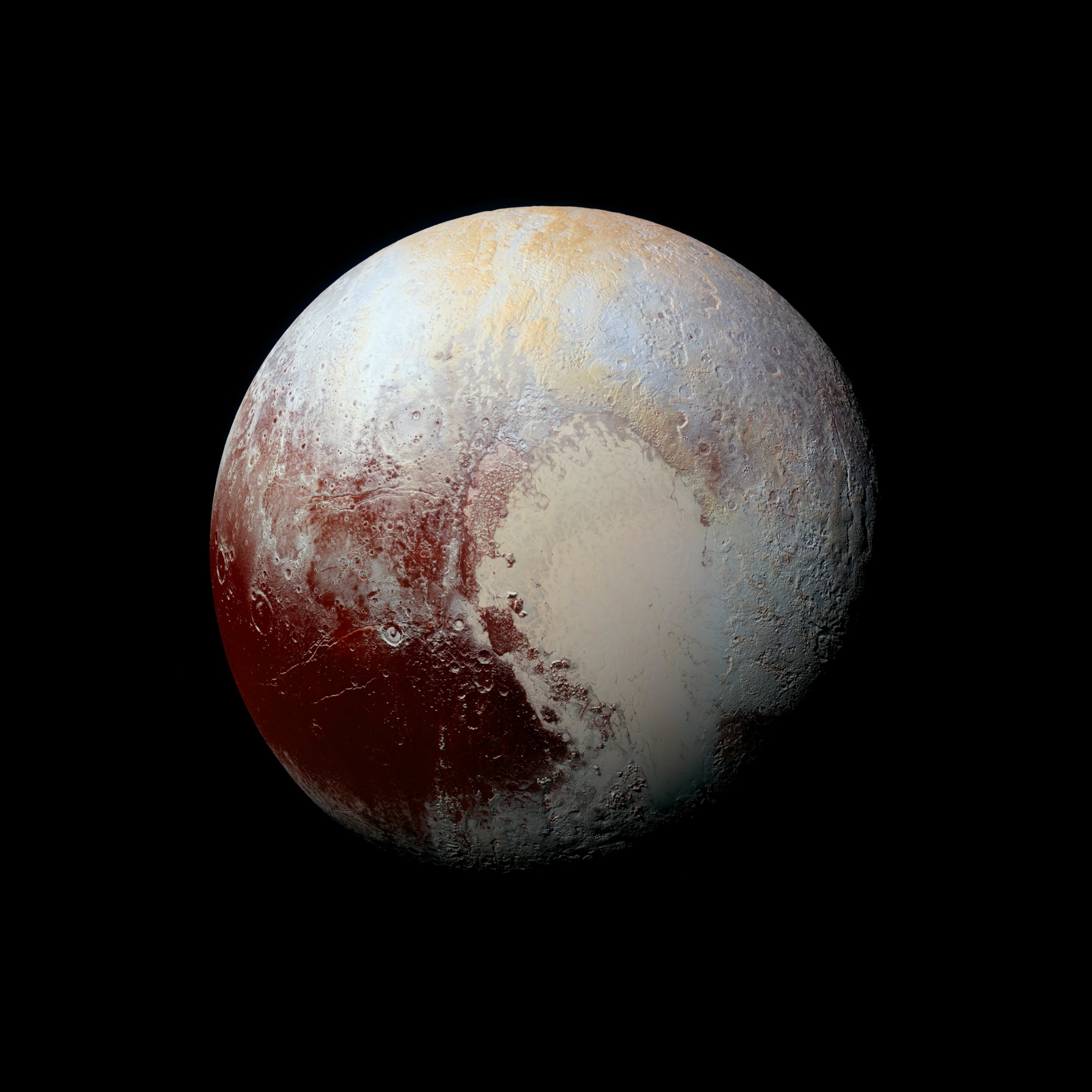
What Your Child Is Being Taught About Ex-Planet Pluto
It’s been a decade since Pluto got kicked out of full planethood. Here’s what kids are learning about the icy underdog.
For adults who grew up learning about the nine planets in school, it came as quite a surprise when, on August 24, 2006, Pluto was removed from the list. Public outcry in the wake of the decision included plenty of hand-wringing about how the solar system would be taught in schools, including numerous proposed revisions to the mnemonic used to remember the planets’ names.
That was a decade ago, and now a whole generation of schoolkids has grown up in a world where Pluto is not a planet. So what do they know about the icy ball 4.6 billion miles (7.5 billion kilometers) away?
For kids like 10-year-old Leila Boser, Pluto is not forgotten, it’s just a little bit different. When asked what Pluto is, she replied correctly that it’s a “dwarf planet”—the new designation bestowed upon it by the International Astronomical Union.
Many kids today are also well aware that Pluto used to be considered a planet.
Mary Colson, an eighth-grade Earth science teacher and writer for the U.S. Next Generation Science Standards, says that her students have usually heard about Pluto’s “demotion” and are interested in why it happened.
For some students, the icy body’s non-planetary status may be its defining characteristic. When asked what he knows about Pluto, 12-year-old Bennett Cullison quickly says: “It’s not a planet.” His friend Julius Boxer-Cooper, also 12, says that he, too, has “heard a little bit of the small talk about how maybe it’s not a planet.”
That sentiment was echoed by this reporter’s 18-year-old sister, April Little, who was only eight when the change happened.
When asked what Pluto is, she texted simply: “A planet that is not really a planet anymore.”
Sympathy for the Dwarf Planet
Colson says that sometimes, students think that scientists reclassified Pluto because something about the tiny world itself changed, “not realizing that it’s just that our understanding of how we want to define what a planet is” that shifted.
To back up, the reason that Pluto became a dwarf planet is because in 2006, scientists voted for the first time on the definition of a planet—and Pluto didn’t make the cut. Like the other official worlds in our solar system, it orbits the sun and is massive enough that its own gravity makes it round. But there was one key problem.
“It didn’t have enough gravity to clear its orbit of debris, which is one of the characteristics required to be considered a planet,” Colson says. Pluto sits in a distant region of the solar system called the Kuiper belt, and by 2006, astronomers were finding scores of other icy bodies crowding Pluto’s immediate neighborhood, some of them almost matching Pluto in size.
Still, at the time, the decision to designate Pluto as a dwarf planet was controversial. (And for scientists like Alan Stern, the principal investigator for NASA’s New Horizons mission to Pluto, it still is.)
Soon after the reclassification, people placed “get well” cards next to the model of Pluto on the National Mall in Washington, D.C., says David DeVorkin, curator of the history of astronomy and the space sciences at the National Air and Space Museum.
People who were “very emotionally attached to [Pluto] saw it as a demotion,” DeVorkin says. Yet he likes to think that “it wasn’t a demotion, it was actually an elevation. It went from being a peculiar object that defied clean classification to being the king of the Kuiper belt.” (Read “Pluto a Planet Again—On Friday the 13th, in Illinois.”)
Teach Your Children Well
To teach kids about Pluto’s status change, DeVorkin co-wrote a book called Pluto’s Secret. In it, Pluto is “a playful character who had a secret, and was delighted when humans kept on finding out about it,” DeVorkin says.
The book explains that when scientists found Pluto in 1930, they were surprised by how small it was. Later, scientists realized that Pluto isn’t really like the other planets, and instead is more similar to the objects surrounding it. Now, Pluto is one of five dwarf planets recognized by the IAU, and plenty more objects will likely earn that designation.
“Kids were worried that Pluto was disappointed,” DeVorkin says. “And our book says, no, Pluto was finally found out and was happy about it.”
The IAU general secretary, Piero Benvenuti, hopes that future generations of scientists won’t be as concerned about Pluto’s classification as some people are today.
“We do hope that the young generations, by now, [are] aware that there is a new class of objects that are called dwarf planets,” he says. “Instead of concentrating on Pluto and the Pluto debate,” he says, he wants them to realize “that our knowledge of the solar system is much richer than in the past.”
After all, it’s not the names we use for space objects that are important, but what we learn about them as our understanding of the universe improves. Plus, thanks to missions like New Horizons, we know that Pluto by any other name would still have that cute heart decorating its icy face.
Follow Becky Little on Twitter.
Take more National Geographic quizzes.








